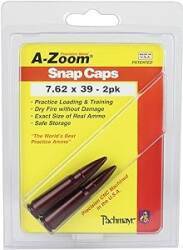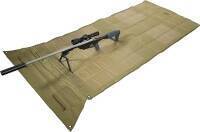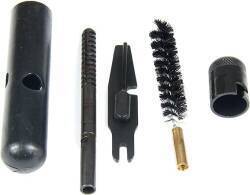
How to Field Strip the SKS Rifle
How to Field Strip the SKS Rifle
Field stripping is the term for disassembling a gun into its major components or assemblies. You don't completely disassemble it, but you break it down enough that you can clean and lubricate it. As the term suggests, this is something you might do in the field while further disassembly requiring special tools would be done back at the armory or shop. Here is how to field strip the SKS rifle.
In 1945, Sergei Gavrilovich Simonov invented a 7.62x39mm service rifle that the Soviet Union later standardized as the SKS (or СКС in the Cyrillic alphabet), the Samozaryadniy Karabin sistemi Simonova (Самозарядный Карабин системы Симонова), the Self-loading Carbine, system of Simonov.

The SKS was quickly replaced by the AK-47 as the USSR's primary service rifle, but it remained as the secondary shoulder-fired arm, issued to non-infantry and second-line troops at least into the 1980s and possibly into the early 1990s. It's still in official military service in the People's Republic of China, the Democratic People's Republic of (North) Korea, and some African nations. Versions of the SKS are still used by ceremonial units and honor guards within former Warsaw Pact nations.
The People's Republic of China is probably the most prominent manufacturer of an SKS model, given the vast numbers they produced. The Chinese called it the Type 56 (or Model 56).
Other SKS manufacturers included Romania, Yugoslavia, Albania, East Germany, and North Korea. Poland refurbished and modified Soviet built rifles. North Vietnam was a source of a small number, either modified Soviet and Chinese units, or slightly varied clones of those.
The SKS is very popular in the North American civilian market, and was imported in enormous numbers until 1994. It is military, firing the same 7.62x39mm cartridge as the AK-47, but not so military in the analysis of just what makes an infantry rifle be an "assault rifle" or not. Survivalists are ready to "go inna woods" with their SKS.
Start, of course, with an empty rifle!
Make absolutely certain that the weapon is unloaded.
The magazine follower is the plate that rises under spring pressure to lift the top round into place for chambering.
When the magazine is empty, the follower will lock the bolt back, as seen here.
Pull back on the bolt handle to release the pressure on the follower, push the follower down while allowing the bolt to advance slightly, get your hand out of the way, and allow the bolt to close.
Notice the lever at the right rear of the receiver cover. Here you see it in its normal horizontal position.

Amazon B0002IKAMI

Rotate that lever to the vertical position, then pull it and the locking pin toward the right, out of the receiver cover. The pin is captive, you cannot completely remove it.

When the retaining pin is fully extracted to the right, you can remove the receiver cover.

Release the rear of the recoil spring and pull it out of the bolt. Then pull the bolt carrier to the rear and lift it and the bolt out of the receiver.

Separate the bolt from the bolt carrier.

Above and at right you see the bolt and bolt carrier from the top and side, respectively.

Notice the lever on the right side of the rear sight block. Normally it is rotated about 45° below the horizontal.

Rotate that locking lever upward to approximately 45° above the horizontal. This will rotate the flatted shaft that holds the forward hand guard and gas piston in place.


Amazon B009BQUIAG
Lift the rear of the gas cylinder and forward handguard, raising if off the barrel.

Remove the gas cylinder and forward handguard and set the assembly aside.


You will see a piston within a cylinder in the front of the rear sight block. This is the gas piston extension, which has a fairly powerful spring compressed behind it. Place the thumb of one hand over the end of that piston.
Use your other hand to rotate the locking lever to the fully upright position, freeing that gas piston extension.
Allow its spring to gently expand and push the pin out of the rear sight block. Then remove the gas piston extension and its spring and set them aside.
Rotate the gun about the axis of its barrel, and find the latch within the rear of the trigger guard.
Place the safety lever in the "Safe" position, rotated forward against the stock. Then use a rigid object like a punch or a screwdriver to depress this latch.

Rotate the trigger group around its front end and lift it out of the stock.

Pull the rear of the magazine down, away from the stock. When it has rotated slightly around its front end, it can be removed from the receiver and stock.
You can now separate the stock and the receiver-barrel assembly by rotating the stock downward around its front end.
The rifle is now ready for cleaning.

See the Section 922r compliance page for details on how to make certain that your surplus rifle is legal!





